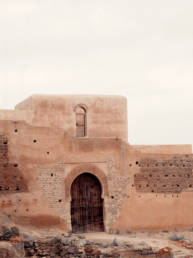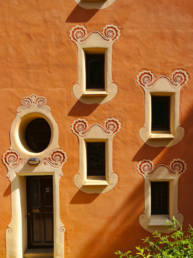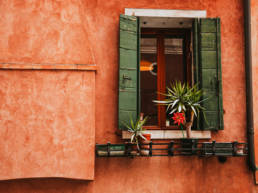What is Natural Building?
From adobe to cob to bamboo structures, natural building is our heritage.
As modern construction has become heavily dependent on concrete, plastics, foams, and chemical products, we have seen a resurgence of people choosing alternative building methods, inspired by the natural building techniques of the past. These techniques are far from new, dating to ancient civilizations thousands of years ago. In fact, the reason why we have been able to learn so much about ancient civilizations in the Middle East, the Mediterranean, and Northern Africa, for example, is because their structures are still standing today. This is because they used natural materials, which hold up against time, weather, and regular usage far superior than the building materials we use today.
Types of Natural Building
Walk into an old village in any country in the world, and you will find earthen or natural structures. Bamboo homes in Thailand, cob homes in India, wattle and daub in the United Kingdom, Adobe in the American Southwest, and, in our case, Quincha Houses in Panama. Until about 100 years ago, using the natural materials around us was our only choice. For tropical climates, for example, they often use a cage of bamboo as a base and then plaster an earthen mixture of clay, sand, and straw onto it. The fibers of the straw and the cage underneath give these types of natural buildings incredible strength that lasts 100s of years. In Ancient Greece, they used sun-dried mud bricks, which couldn’t carry strength as well but was nonetheless a building material that came from beneath their feet. We have priced modern homes so high, that building one for only a few thousand dollars seems unrealistic, but this was how we naturally approached building before the construction industry came around. Natural buildings are completely versatile in size and style. Take, for example, the Grand Mosque of Djenne in Mali, a 328 feet by 131 feet mud structure that is 52 feet high now over 120 years old!
Merging Past and Future
By creating a home that is made of the same materials as those around you, you create a space that is harmonious with nature instead of shielding you from nature. This has incredible health benefits. Cob walls, for example, keep the interior space of a home around 68F in tropical temperatures, this means no air-conditioning is needed! Cob is a great insulator, so wattle and daub homes in England were able to keep dwellers warm with a simple wood-burning oven for hours. Earthen floors keep our feet connected to the ground, which has been shown to improve our body’s electrical balance and reduce inflammation. Natural homes improve sleep because they do not block us from lunar energy. Cob homes do not collect mold, a common cause in autoimmune disease, asthma, cancer, and other disorders today. A home that is harmonious with nature creates harmony within us, balancing our internal elements like Water and Fire with the elements in our environment. Our lifestyles, diets, and homes tend to imbalance our internal elements, which is where Ayurveda can help. The goal is to keep the flow open and not block nature within or around us, which is the foundation of physical and mental imbalance, according to Ayurveda.
Learn More
Natural Living Blog
This blog is building slowly, but it will feature topics on natural building construction, tips from ancient cultures on how to preserve and design natural buildings, and guidance on bringing nature into your home and into your lifestyle!






